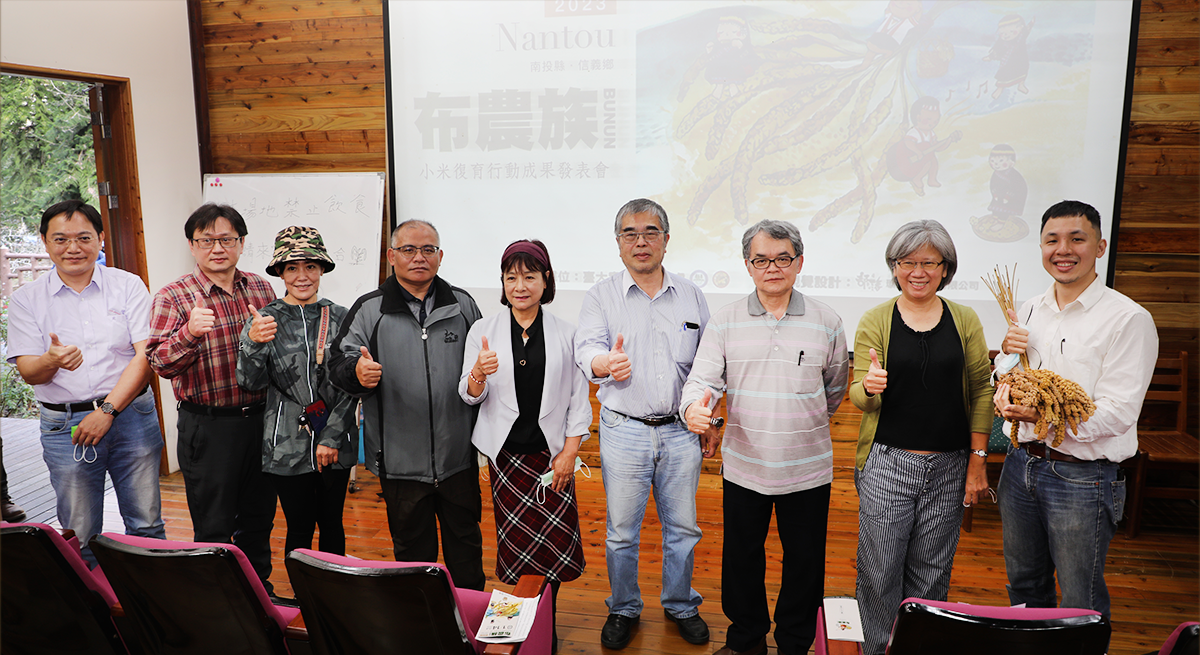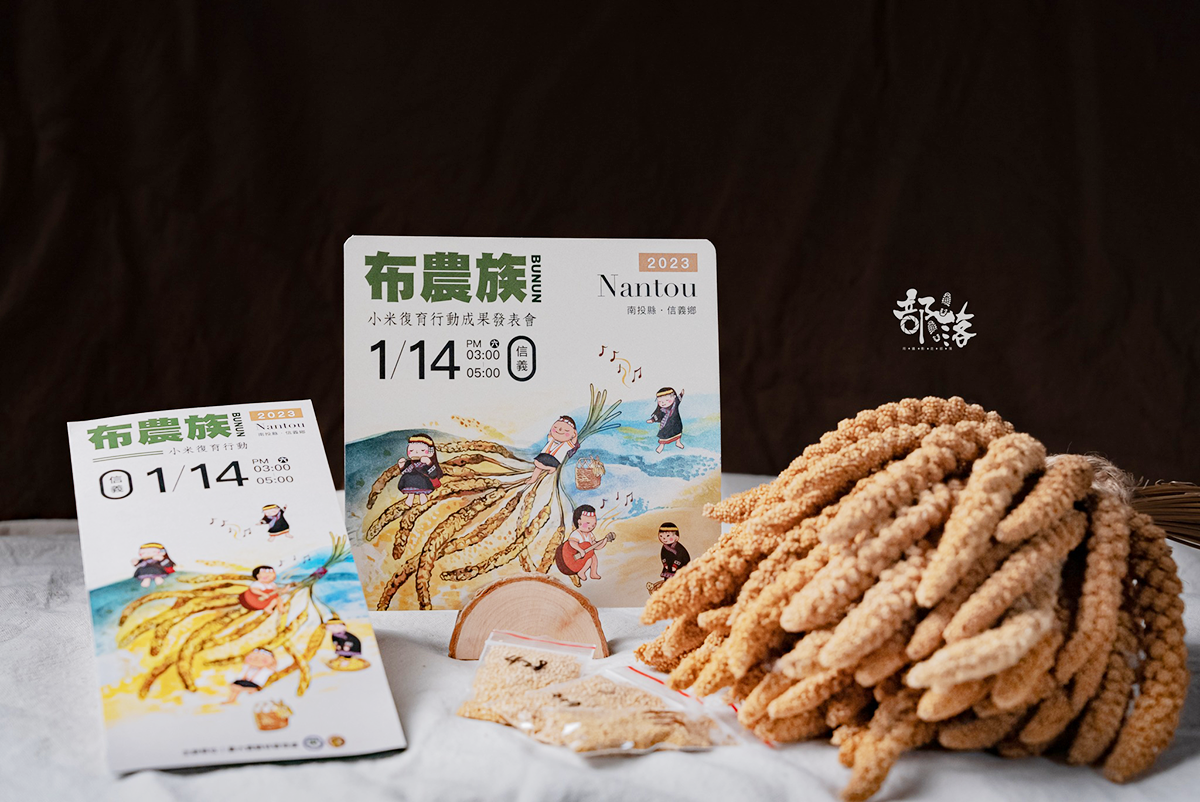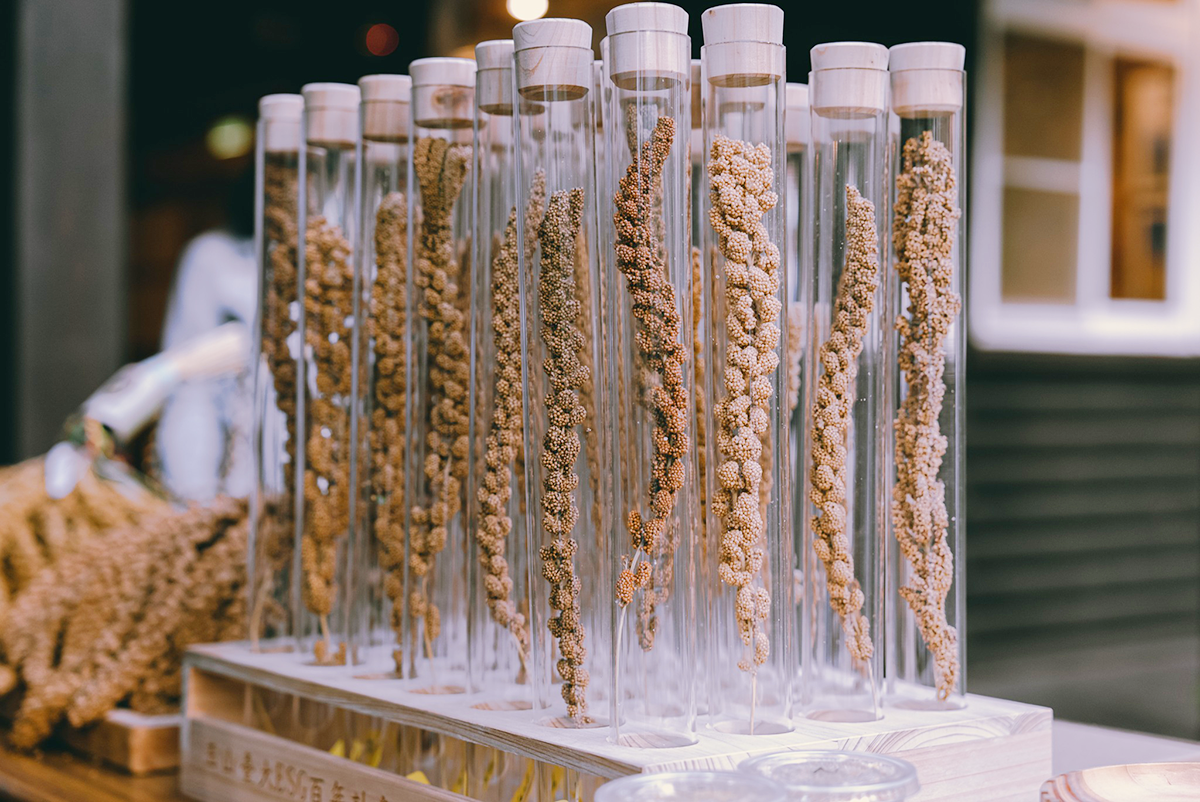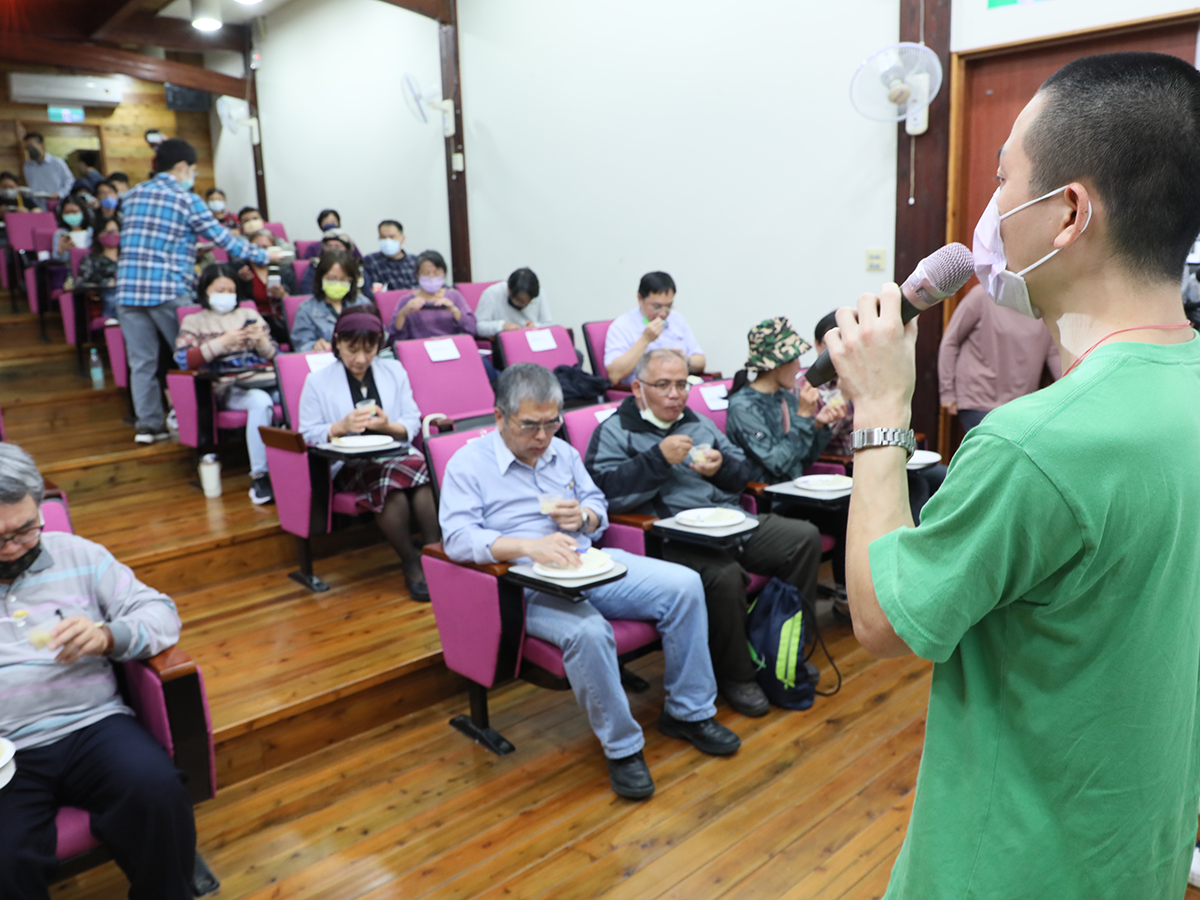
From left to right: Deputy Director of the NTU Experimental Forest Chiang Wei, Principal Chi-Yo Shih of Tong-Fu Junior High School, Principal Savungaz Tanapima of Mahavun Elementary School in Xinyi Township, Committee Member of the Experimental Forest Bagkall Haivangang, Co-management Committee Member Shu-Ying Kan, Director of the Experimental Forest Ming-Jer Tsai, Dean of the College of Bioresources and Agriculture Huu-Sheng Lur, Prof. Yann-Rong Lin of the Department of Agronomy, Ko-Hsuan Shao, PhD student of the Department of Bio-Industry Communication and Development. The bunch of millet in Mr. Shao’s hands is special in that it is the first indigenous millet variety in Xinyi Township that was planted and donated by a local resident who worked with the team. (Photo credit: Staff photo.)
Millet was one of the early staple food crops of the Bunun tribe in Xinyi Township, Nantou. However, millet farming gradually declined due to the adverse indigenous policies during the period of Japanese rule and the subsequent market economy. Native millet species and related Bunun annual rituals also disappeared due to these pressures. In effort to restore millet farming and consumption, the Experimental Forest of NTU’s College of Bioresources and Agriculture launched a millet revival initiative in August 2020. Subsequently, NTU collaborated with E.SUN Commercial Bank in launching a millet revival project in March 2022, aimed to bring native millet seeds back to the tribes to begin larger-scale participatory millet crop restoration actions and promote the Six-Level Industries Development Program.
The Experimental Forest held a series of activities at the beginning of the year in conjunction with the International Year of Millets declared by the Food and Agriculture Organization of the United Nations (FAO) in 2023. In mid-January, a presentation about successful millet restoration and tasting session was held in Xinyi Township, to inform the public about the team’s effort to restore millet farming during the past two years. Indigenous millet seed packets and instruction manuals were distributed to the attendees, who were also invited to taste and describe the taste of the different millet species. The participants included many local youths, experts, and scholars who care deeply about millet restoration.
The initiative restored 28 millet strains with different physical qualities, flavors, and traditional contexts. In traditional Bunun culture, these millet varieties are used to make different dishes, such as millet rice, millet cake, and millet wine, and for different purposes, such as banquets and rituals; certain millet varieties are selected for the elderly, pregnant women, and young children, respectively. By sharing the results of the restoration initiative and research with the local communities, the millet restoration team anticipates promoting a new outlook for the tasty and nutritious native millet varieties that are rooted in Taiwan’s indigenous cultures.

NTU Experimental Forest organizes a presentation of Bunun millet restoration in Xinyi Township, Nantou County on January 14, 2023. (Photo credit: Circling Taiwan Co., Ltd.)

Besides presenting the 28 restored millet strains, millet seed packets, instruction manuals, and snack boxes were presented to the participants. (Photo credit: Circling Taiwan Co., Ltd.)

The participants were invited to taste 4 different millet varieties at the presentation. All the varieties have different common names, tastes, and traditional purposes.